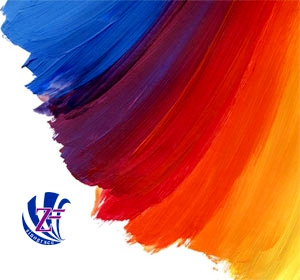Classification and characteristics of waterborne coatings - waterborne polyurethane coatings
- 2020-02-22 14:22:02
- admin

Classification and characteristics of waterborne coatings - waterborne polyurethane coatings
Polyurethane is a general term for a class of macromolecular compounds having a carbamate structure in a molecular structure, and is usually produced by a polyaddition reaction of a diisocyanate and a polyol. In view of the variety of isocyanates and polyols, the resulting polyurethanes can range from soft to hard, from brittle to tough, from highly elastic to rigid in a variety of forms. Polyurethane coatings also have a wide range of performance adjustments.Depending on the type of isocyanate used to prepare the polyurethane, the polyurethane emulsion and the corresponding lacquer can be classified into two major categories, aliphatic and aromatic.The aliphatic paint film has excellent weather resistance and yellowing resistance, and can be used as an outdoor decorative paint; aromatic waterborne polyurethane is mostly used for interior decoration paint.The polyol used is a polyether polyol, a polyester polyol, a polyolefin polyol, etc.,thus, the title of polyether polyurethane waterborne coating, polyester polyurethane waterborne coating, etc.
A hydrophilic group or a hydrophilic segment must be introduced during the synthesis of the aqueous polyurethane.The most common hydrophilic groups are anionic carboxylic acid groups and sulfonic acid groups; macromolecular backbones and side chains may also have cationic groups such as quaternary ammonium ions; or nonionic polyoxyethylene long segments and The hydrophilic group hydroxymethyl group, the corresponding aqueous polyurethane is called anionic, cationic and nonionic.The particle size obtained by polymerization is polyurethane emulsion and polyurethane dispersion (PUD). The latter usually has a nanometer particle size, and the appearance is translucent or completely transparent. It is one of the best waterborne wood lacquer bases. It is specifically referred to as a nanoemulsion to distinguish it from a normal emulsion that is white in appearance.
Waterborne polyurethane has excellent flexibility after film formation. It is often blended with a relatively rigid acrylic emulsion. The obtained waterborne wood lacquer has the advantages of both, especially in the film formation at lower temperatures. Better paint film hardness.A better method is to introduce an acrylic monomer in the process of preparing the polyurethane dispersion to form a core-shell structured particle in which the polyacrylate is a core and the polyurethane is a shell.This polyurethane-acrylic dispersion (PUA) is considered to be a fourth-generation polyurethane dispersion, specifically called a hybrid , which is better than a blend of acrylic emulsion and polyurethane dispersion, mainly in distribution. The paint is more stable, has better low-temperature film formation, no stickiness, high hardness, good flexibility, good adhesion, etc., and has been widely used.
The aliphatic polyurethane dispersions represented by Sinograce Chemical utilize unique nanotechnology to maximize the performance of the polyurethane body.Coatings formulated with them have unmatched gloss and toughness in other systems.At the same time, Sinograce Chemical's polyurethane/polyacrylate hybrid series utilizes multiple polymerization and self-crosslinking technologies to form a chemical combination of polyurethane and polyacrylate with increased low VOC content.Sinograce Chemical's water based paint materials are good choice for water based wood paint, water based metal paint and water based plastic paint.
Sinograce Chemical produces water based coating,Water-based glue, polyurethane coating
visit us sinograce chemical: https://www.sinogracechem.com
Get a Quote Now :sales@sinogracechem.com
Telephone :+86 0551 63459511

 English
English français
français русский
русский español
español العربية
العربية





